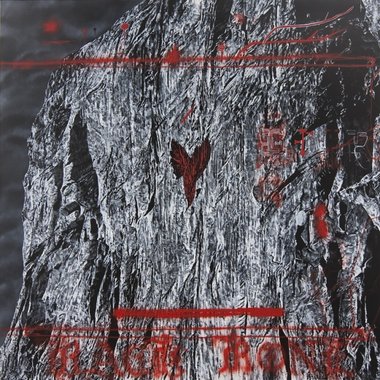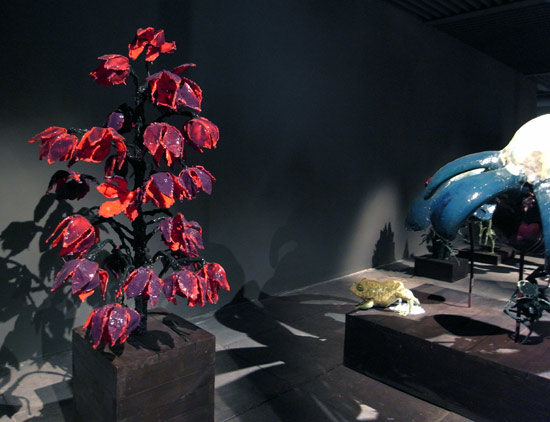1.Research Kapoor's work in order to discuss whether it is conceptual art or not. Explain your answer, using a definition of conceptual art.
Conceptual art is, "art that is intended to convey an idea or concept to the perceiver and need not involve the creation or appreciation of a traditional art object such as a painting or sculpture." (The Free Dictionary, 2011). Conceptual artists dont really limit their approach to art to just paintings and sculpture, but they try to think out of the ordinary and explore different medias to make their pieces work.They'll use any materials and try to make it work.
2. Research 3 quite different works by Kapoor from countries outside New Zealand to discuss the ideas behind the work. Include images of each work on your blog.



Anish Kapoor
Tall Tree & the Eye, 2009
Stainless steel and carbon steel
14 x 6 m
Courtesy the artist
Installation: Guggenheim Museum Bilbao, 2010
This sculpture is nearly or is 15 meters, It is an awkwardly composed artwork, with polished mirrors in spheres that really capture the audience, the scale, and the complex composition makes it quite an abstract work and very appealing aesthetically. Each sphere mirrors whatever passes by and it looks as if it multiplys the image through each other..Such is the effect of a brilliant mind. This unique and cleverly executed design needed innovative ,engineering design and precision manufacturing . I think the work and ideas that went into this design are amazing, the idea to reflect each sphere from each other, to creat multiple image reflections, not randomly but cleverly/thoughtfully. I like this work as it is very interesting and looks more approachable than his other works.

Anish Kapoor
Shooting into the Corner, 2008/2009
"Shooting into the Corner" consists of a cannon developed by Kapoor together with a team of engineers. A pneumatic compressor shoots 11-kilogram balls of wax into the corner across the room; all in all, 20 tons of wax will be "fired away" throughout the exhibition run. Loud aggression on the one hand and silent growth on the other give the piece tension, sensuality, and compelling power.( http://www.e-flux.com/shows/view/6532) He has thought a lot more about the feelings of the audience during and after the shooting. The atmosphere in the room at that time.
3.Discuss the large scale 'site specific' work that has been installed on a private site in New Zealand.

4. Where is the Kapoor's work in New Zealand? What are its form and materials? What are the ideas behind the work?
It is in 'The farm', or 'Specified Site', located in Kaipara, North of Auckland. Its was made of PVC coated polyester, red, by ferrari textiles. It was designed to withstand the high winds from the north west coast off the north island.
5. Comment on which work by Kapoor is your favourite, and explain why. Are you personally attracted more by the ideas or the aesthetics of the work?
The Shooting cannon is my fav. I chose it over the tall tree and eye because of the different experience it brings rather than just a reflection of yourself. Imagine being indoors with a shooting cannon firing colourful ammo on a white surface, Id enjoy a lot, and then of course the aftermath will be interesting too.I love the aesthetics and the whole composition of the design, negative space really brought it out.
Youtube has some excellent footage on Kapoor-take a look at Anish Kapoor at the Royal Academy.
www.royalacademy.org.uk ›
http://www.robgarrettcfa.com/thefarm.htm
http://www.billslater.com/cloudgate/
http://en.wikipedia.org/wiki/Cloud_Gate
http://www.zimbio.com/pictures/iP_GLtGbob8/Anish+Kapoor+Uses+Wax+Canon+Create+Latest
http://www.e-flux.com/shows/view/6532
http://www.terminartors.com/artistprofile/Kapoor_Anish
http://en.wikipedia.org/wiki/Anish_Kapoor
http://www.robgarrettcfa.com/thefarm.htm
http://fabricarchitecturemag.com/articles/0110_sk_sculpture.html
http://www.desiblitz.com/content/anish-kapoor-at-the-riba














 'Han Dynasty Urn with Coca-Cola logo'(1994), Ai Weiwei
'Han Dynasty Urn with Coca-Cola logo'(1994), Ai Weiwei


